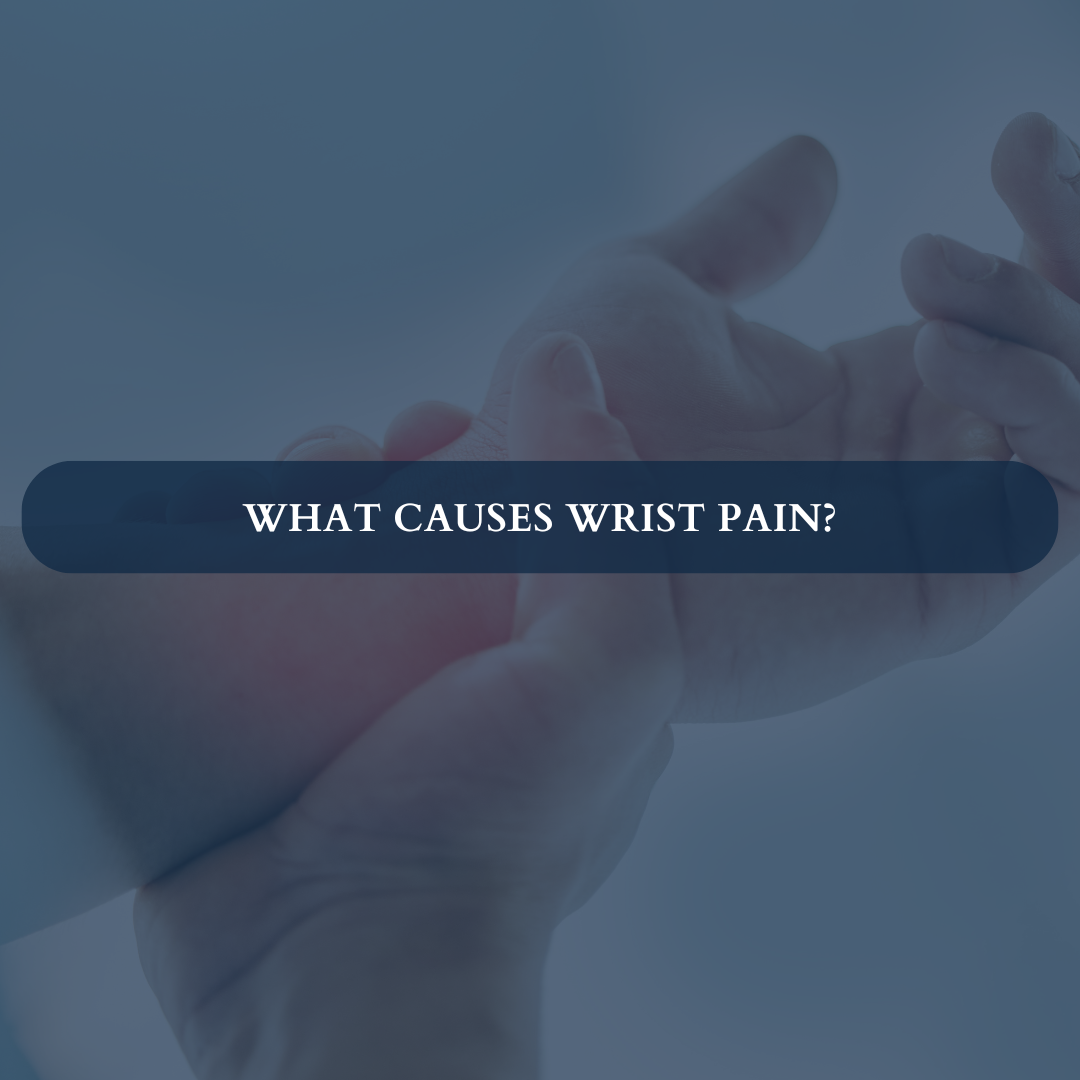Wrist pain is a common ailment that can affect individuals of all ages and lifestyles. Whether you are an athlete, an office worker, or someone who enjoys hobbies that involve repetitive hand movements, wrist pain can be a significant hindrance to your daily activities. Understanding the various causes of wrist pain is crucial for effective treatment and prevention. This article will explore the most common causes of wrist pain, symptoms to look out for, and strategies for relief and prevention.
Anatomy of the Wrist
To understand what causes wrist pain, it’s essential to have a basic knowledge of the wrist’s anatomy. The wrist is a complex joint made up of eight small bones called carpals, which connect the hand to the forearm. These bones are arranged in two rows and are supported by ligaments, tendons, muscles, and nerves. The intricate structure of the wrist allows for a wide range of motion, but it also makes it susceptible to injuries and conditions that can lead to pain.
Common Causes of Wrist Pain
1. Carpal Tunnel Syndrome
Carpal Tunnel Syndrome (CTS) is one of the most well-known causes of wrist pain. It occurs when the median nerve, which runs from the forearm into the palm, becomes compressed at the wrist. Symptoms include numbness, tingling, and pain in the hand and wrist, often worsening at night. Prolonged typing, repetitive hand movements, and certain medical conditions like diabetes can increase the risk of developing CTS.
2. Wrist Tendinitis
Wrist tendinitis is the inflammation of the tendons in the wrist. This condition is typically caused by repetitive strain or overuse, leading to pain and tenderness along the affected tendon. Athletes, particularly those involved in sports like tennis or badminton, are prone to developing wrist tendinitis. Treatment often involves rest, ice application, and anti-inflammatory medications.
3. Wrist Sprains
Wrist sprains occur when the ligaments in the wrist are stretched or torn, often due to a fall or sudden impact. Symptoms of a sprained wrist include swelling, bruising, and pain, especially when moving the wrist. Depending on the severity, treatment can range from rest and immobilization to physical therapy or, in severe cases, surgery.
4. Arthritis
Arthritis in the wrist can be caused by various forms, including osteoarthritis and rheumatoid arthritis. Osteoarthritis results from the wear and tear of cartilage, leading to pain and stiffness. Rheumatoid arthritis is an autoimmune condition where the immune system attacks the joint lining. Both types can cause significant discomfort and reduced mobility in the wrist.
5. Ganglion Cysts
Ganglion cysts are noncancerous lumps that often develop along the tendons or joints of the wrists and hands. They can cause pain, particularly when they press against a nerve. These cysts can vary in size and may fluctuate, sometimes disappearing on their own. Treatment options include aspiration, where the fluid is drained, or surgical removal.
6. De Quervain’s Tenosynovitis
De Quervain’s tenosynovitis is a condition affecting the tendons on the thumb side of the wrist. It is characterized by pain and swelling near the base of the thumb, especially when forming a fist, grasping, or turning the wrist. This condition is commonly caused by repetitive hand or wrist movements and can be treated with splints, anti-inflammatory medications, or corticosteroid injections.
7. Kienbock’s Disease
Kienbock’s disease is a rare condition where the blood supply to one of the small bones in the wrist (the lunate) is interrupted, leading to bone death. Symptoms include wrist pain, stiffness, and decreased grip strength. Treatment ranges from immobilization to surgical procedures to restore blood flow or remove the damaged bone.
8. Wrist Fractures
Wrist fractures are breaks in any of the bones within the wrist. The most common type is a distal radius fracture, which often results from falling onto an outstretched hand. Symptoms include severe pain, swelling, and deformity of the wrist. Treatment typically involves immobilization with a cast or splint, and in some cases, surgery may be necessary to realign the bones.
9. Repetitive Strain Injuries (RSIs)
Repetitive strain injuries (RSIs) occur due to repetitive motions or overuse of the wrist, leading to pain, swelling, and loss of function. Common examples include conditions like trigger finger and tennis elbow. These injuries are prevalent among people whose jobs or hobbies involve repetitive wrist motions. Treatment often includes rest, ergonomic adjustments, and physical therapy.
10. Gout
Gout is a type of inflammatory arthritis caused by the buildup of uric acid crystals in the joints. While it commonly affects the big toe, gout can also occur in the wrist, causing intense pain, redness, and swelling. Managing gout involves dietary changes, medications to lower uric acid levels, and anti-inflammatory drugs.
Symptoms of Wrist Pain
The symptoms of wrist pain can vary depending on the underlying cause. Common symptoms include:
- Pain or tenderness in the wrist
- Swelling or inflammation
- Stiffness or reduced range of motion
- Numbness or tingling (especially in conditions like carpal tunnel syndrome)
- Weakness in the hand or wrist
- Difficulty gripping objects
Diagnosing Wrist Pain
Proper diagnosis of wrist pain is essential for effective treatment. A healthcare provider will typically begin with a physical examination to assess the wrist’s range of motion, strength, and tenderness. Imaging tests such as X-rays, MRI scans, or CT scans may be ordered to get a detailed view of the wrist’s internal structures. In some cases, nerve conduction studies or blood tests may be performed to identify underlying conditions like carpal tunnel syndrome or arthritis.
Treatment Options for Wrist Pain
1. Rest and Immobilization
Rest is crucial for healing wrist injuries. Using a wrist splint or brace can help immobilize the wrist, preventing further strain and allowing it to heal.
2. Ice and Heat Therapy
Applying ice can reduce inflammation and numb the pain, especially in acute injuries. Heat therapy can help relax and loosen tissues, and stimulate blood flow to the area.
3. Medications
Over-the-counter pain relievers such as ibuprofen and acetaminophen can help manage pain and inflammation. In more severe cases, a doctor may prescribe stronger pain medications or corticosteroid injections.
4. Physical Therapy
Physical therapy can strengthen the wrist muscles, improve flexibility, and reduce pain. A therapist can guide through exercises tailored to the specific condition causing the wrist pain.
5. Surgery
In cases where conservative treatments are ineffective, surgery may be necessary. Surgical options vary depending on the condition but can include procedures to release compressed nerves, repair torn ligaments, or remove ganglion cysts.
6. Lifestyle and Ergonomic Adjustments
Making lifestyle changes and ergonomic adjustments can prevent wrist pain from recurring. This can involve using ergonomic tools at work, taking regular breaks from repetitive tasks, and maintaining a healthy diet and weight.
Preventing Wrist Pain
Preventing wrist pain involves taking proactive steps to reduce the risk of injury and strain. Here are some tips:
- Practice good ergonomics: Ensure your workstation is set up to support proper posture and wrist positioning.
- Take frequent breaks: If you perform repetitive tasks, take breaks to rest your wrists.
- Strengthen your wrist muscles: Engage in exercises that strengthen the muscles around the wrist to provide better support.
- Use protective gear: Wear wrist guards or braces during activities that put your wrists at risk of injury.
- Maintain a healthy lifestyle: Stay active, eat a balanced diet, and manage conditions like diabetes and arthritis effectively.
Conclusion
Wrist pain can significantly impact your quality of life, making everyday tasks challenging and uncomfortable. Understanding the various causes of wrist pain, from carpal tunnel syndrome to arthritis and wrist fractures, is the first step towards effective treatment and prevention. By recognizing the symptoms, seeking proper diagnosis, and following appropriate treatment plans, you can manage wrist pain effectively. Moreover, adopting preventive measures and making lifestyle adjustments can help you maintain healthy wrists and avoid future discomfort. If you experience persistent or severe wrist pain, it’s essential to consult with a healthcare professional to determine the best course of action tailored to your specific needs.
Also Read
7 Common Causes of Wrist Pain You Never Knew About (And How to Fix Them)
Ready to explore your options for chiropractic and physiotherapy? Contact SwastyaPhysio today to schedule a consultation and discover the best path to your wellness journey. We’re here to support your health every step of the way.
Banaswadi | HBR layout | Kalyan Nagar | Kammanahalli | Horamavu | Hennur






